Drive and Dive: Advanced Dives on Florida's East Coast
The East Coast of the United States is littered with shipwrecks, but nowhere will you find a larger collection of sunken vessels concentrated close to shore than in the waters of southeast Florida. Human effort — not war or natural disaster — accounts for the majority of these wrecks. Beginning in the 1980s, an ambitious artificial-reef program has resulted in the scuttling of dozens of ships, some placed in shallower depths for recreational divers to explore, others dropped a bit deeper for the benefit of fishermen — and advanced divers.
Compared with the more-challenging conditions common to wrecks in the Great Lakes and northern Atlantic, South Florida’s fish havens are washed by warm, clear waters and sit close to shore for easier access. These qualities proved ideal for the nascent tec-diving movement; as extended-range practices migrated north from Key West in the early 1990s, Fort Lauderdale and Pompano Beach became the epicenter for extended-range diving. Three of the industry’s leading technical agencies — IANTD, TDI and GUE — trace their roots to the region, and area shops were pumping helium and high-pressure oxygen long before the rest of the country embraced nitrox.
Today, there are a number of charter boats that provide transport to area wrecks, and cater to extended-range divers. Charters operate from the Port Everglades, Hillsboro and Boca inlets. Of the three, Hillsboro provides easy access to the greatest number of wreck sites, ranging from rec friendly depths of less than 100 feet to beyond 200 feet. This variety is ideal for training scenarios, as aspiring techies can practice doubles and stage management on wrecks such as the Rodeo 25 or Captain Dan, hone deep-air or normoxic skills on the Miller Lite, or delve deeper on signature sites such as the RBJ/ Corey N Chris.
Bolstering the local tec-diving community is a constant flow of out-of-state enthusiasts who come for training, or as a respite from Northern winters. That said, technical trips are rarely offered daily by any of the area’s charter operators, and instead are scheduled according to demand. For divers traveling solo or in small teams, advance planning is the best way to determine who is going where, and when.
Offshore conditions in the Fort Lauderdale/Pompano area generally offer better visibility than sites farther to the south off Miami, while currents are typically a bit milder than those washing the coast farther north in Palm Beach and Jupiter. In terms of marine life, divers can encounter schools of patrolling jacks, or the occasional goliath grouper lurking in a cargo hold, but the most dramatic inhabitants are the cloud-like schools of baitfish that envelop superstructures, and the brilliant orange cup corals that encrust the hardware.
Unlike Palm Beach operators — which typically conduct wreck and reef dives as drifts — boats serving Fort Lauderdale and Pompano wreck sites will almost always tie in, providing divers with a secure down line and stationary deco reference. When currents are strong, some captains might offer the option of a live drop if they feel the divers are qualified. In either scenario, divers should carry a substantial surface marker that can be deployed from depth.
In addition to the region’s extended range sites, there are ample opportunities for shallower pursuits. One of the most popular is the Wreck Trek, which ties three wrecks — Jay Scutti, Tracey and Merci Jesus — together on a single exploration in the 60- to 70-foot range. Closer to shore, the Copenhagen rests in just 30 feet of water, and is enjoyed by both divers and snorkelers. There are also a wide variety of reef sites in shallow to midrange depths. One favorite is the shore dive at Datura Avenue beach in Lauderdale by the Sea.
Another plus for divers traveling with non-diving family or friends is the Pompano Beach and Fort Lauderdale areas’ reputation as a vacation destination, with world-class beaches and a wide range of dining and entertainment options. Whether your goal is to dive deeper and longer, or just to mix some serious bottom time into a beach vacation, this stretch of South Florida coastline can accommodate.
South Florida Itinerary
DAY 1
Ask South Florida Diving Headquarters to let you on the boat with an intro to tec class on the Safari Diver. Your doubles fit right in, and with a max depth of 130 feet, the Rodeo 25 provides a skills refresher without a long deco. Later, head down to Lauderdale by the Sea, grab a late lunch at Jojo’s Tacos, and then finish the day with live music at Aruba Beach Café.
**DAY 2 **
Wake up early to hit Pompano Dive Center for a normoxic trimix fill and a tec trip to the Miller Lite. Afterward, stop by Under the Sun for a monster Reuben, then drive down U.S. Highway 1 to Fort Lauderdale for a visit to Brownie’s, ground zero for DIR-style tec diving. End the day swapping dive tales at Southport Raw Bar.
DAY 3
A midday departure with Dixie Divers leaves time for a hearty morning feed at Country Ham and Eggs, then it’s time for the main attraction, the Hydro Atlantic. The Lady Go Diver’s Deerfield Beach location makes for a short run to a 300-foot dredger that sits upright from 120 to 175 feet. After the dive, splurge on dinner at Cap’s Place.
Need to Know
>>When to Go Seas are calmest in summer and early fall. Passing winter cold fronts push up larger swells but rarely suspend dive operations.
>>Dive Conditions Water temps range from the low 80s in summer to the low 70s in winter. Cold-water upwellings can create thermoclines at any time of the year, dropping bottom temperatures into the low 60s. Visibility averages 80 feet, but can drop as low as 30 when onshore rains or current eddies carry hazy water to the reefs. The Gulf Stream’s east-to-west shifts dictate current strength, which can range from zero to 2 knots.
>>Operators Pompano Dive Center (pompanodivecenter.com), Dixie Divers (dixiediver.com) and South Florida Diving Headquarters (http://www.southfloridadiving.com/) offer custom gas blends and regular extended-range charters.
>>Price Tag Two-tank trips to wrecks within recreational range are $60; tec trips run $80 to $85.
>>Topside Gold Coast beaches are a must. Choose the quieter vibe of Lauderdale by the Sea or join the tanned and toned in Fort Lauderdale. The riverfront district at Las Olas is worth a stroll; after ogling megayachts at Pier 66, Shooters Waterfront is the place to savor an umbrella drink. For a respite from the fast lane, Hugh Taylor Birch State Park is a natural oasis in the center of the action.
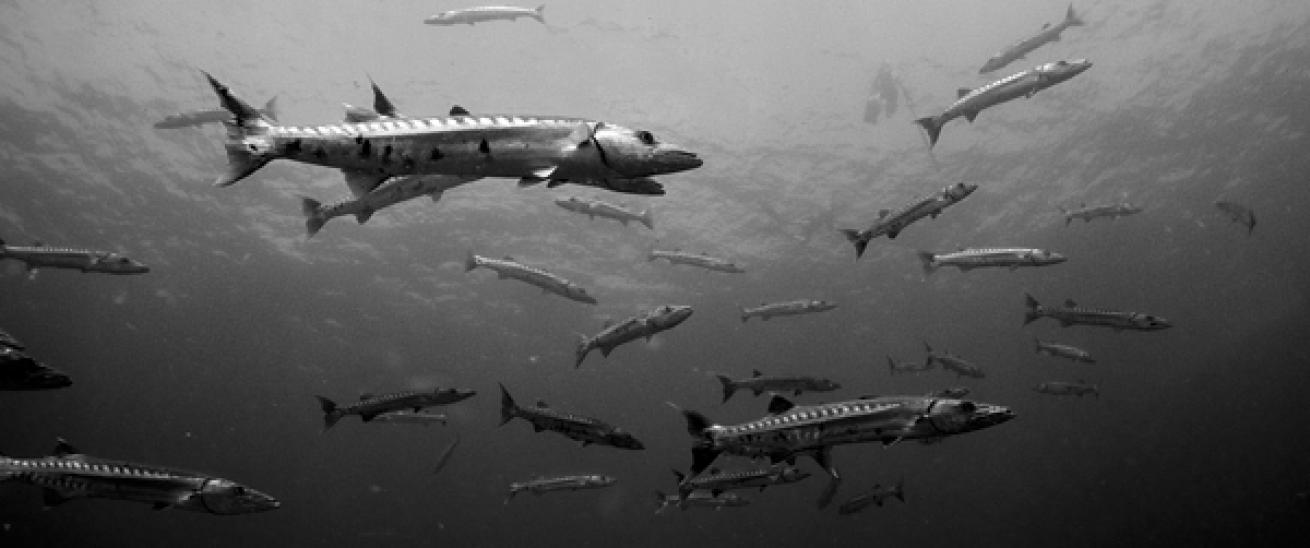
Cameron KirkconnellBarracuda are just one of the highlights of South Florida diving.
The East Coast of the United States is littered with shipwrecks, but nowhere will you find a larger collection of sunken vessels concentrated close to shore than in the waters of southeast Florida. Human effort — not war or natural disaster — accounts for the majority of these wrecks. Beginning in the 1980s, an ambitious artificial-reef program has resulted in the scuttling of dozens of ships, some placed in shallower depths for recreational divers to explore, others dropped a bit deeper for the benefit of fishermen — and advanced divers.
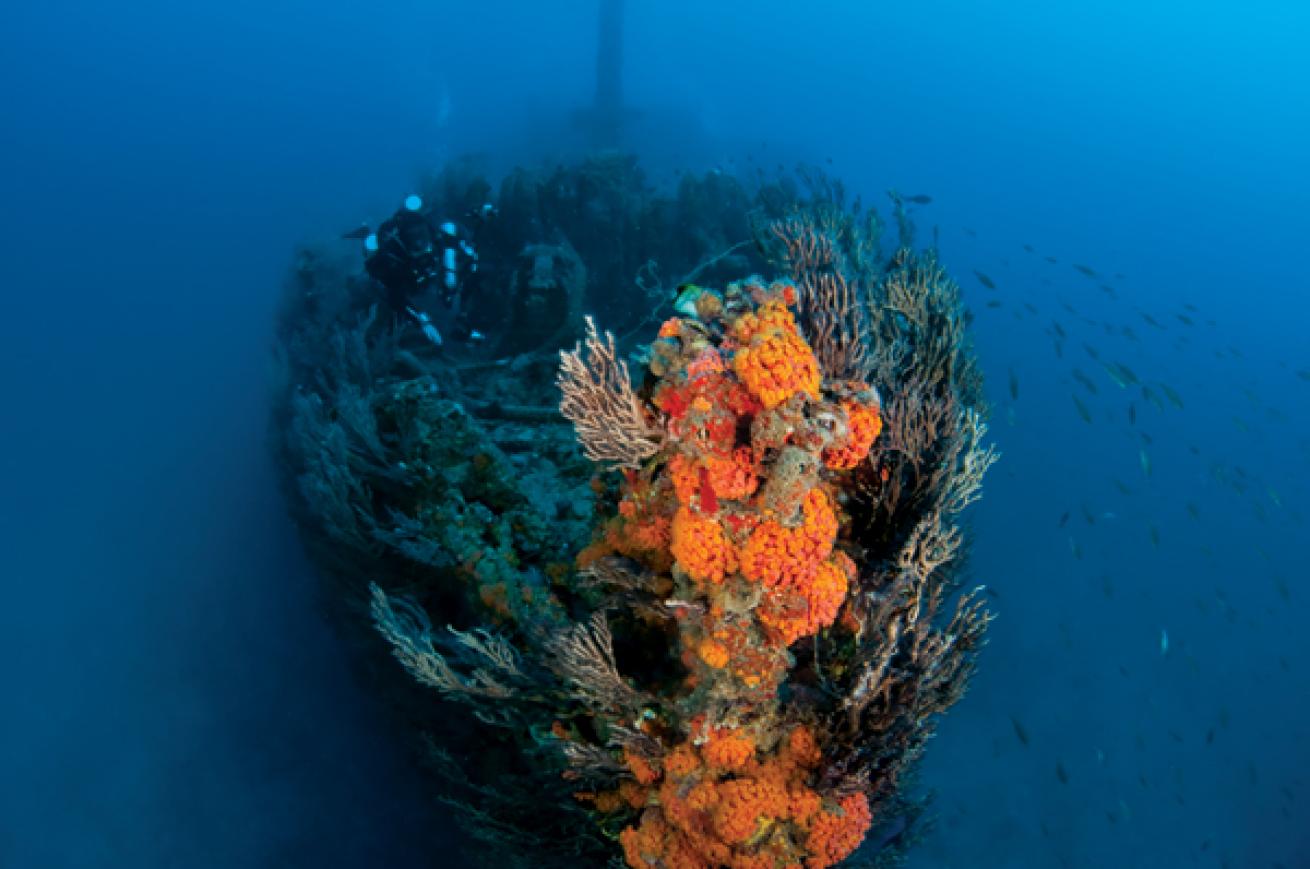
Walt Stearns
Compared with the more-challenging conditions common to wrecks in the Great Lakes and northern Atlantic, South Florida’s fish havens are washed by warm, clear waters and sit close to shore for easier access. These qualities proved ideal for the nascent tec-diving movement; as extended-range practices migrated north from Key West in the early 1990s, Fort Lauderdale and Pompano Beach became the epicenter for extended-range diving. Three of the industry’s leading technical agencies — IANTD, TDI and GUE — trace their roots to the region, and area shops were pumping helium and high-pressure oxygen long before the rest of the country embraced nitrox.
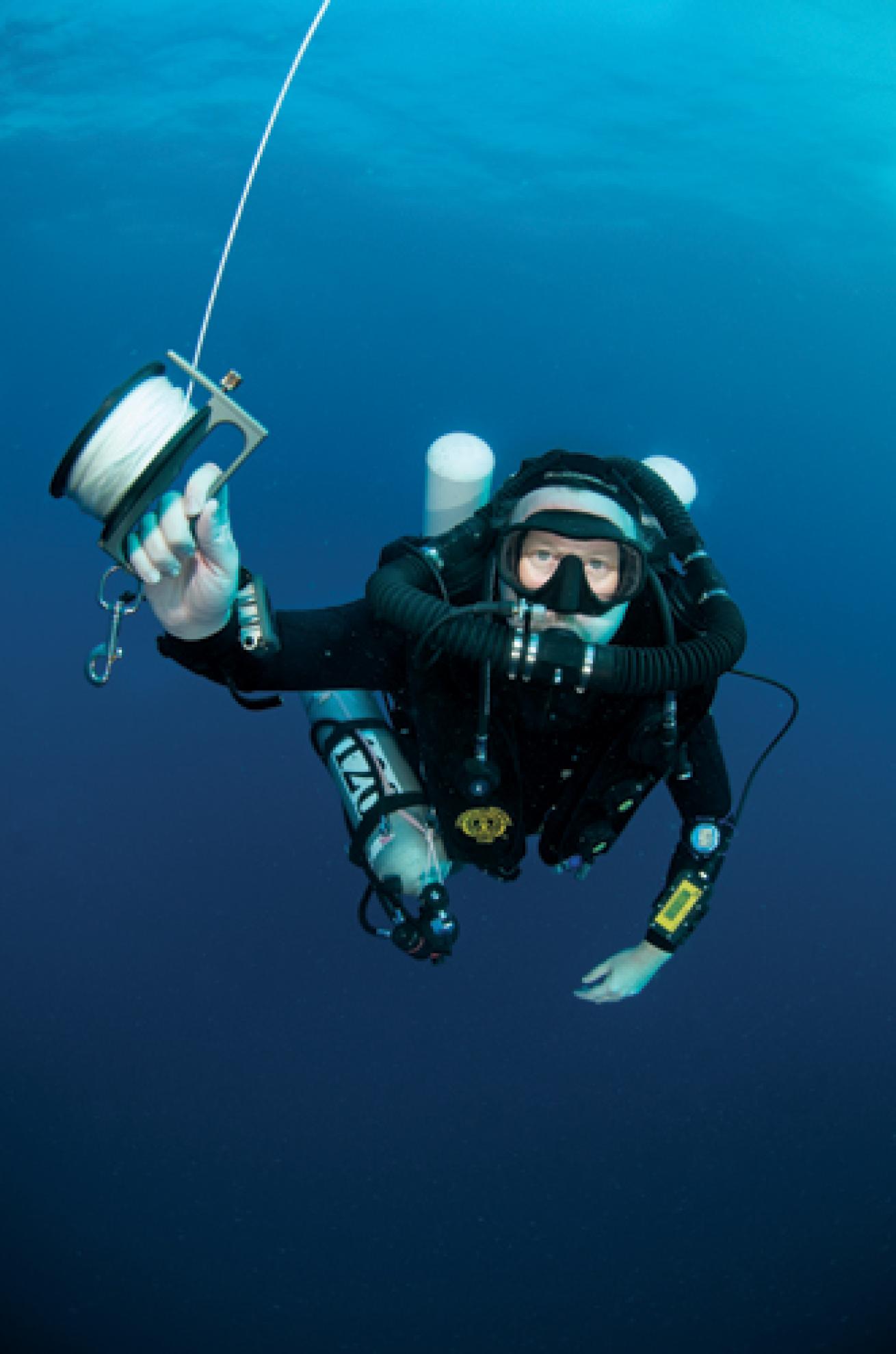
Pete Mesley
Today, there are a number of charter boats that provide transport to area wrecks, and cater to extended-range divers. Charters operate from the Port Everglades, Hillsboro and Boca inlets. Of the three, Hillsboro provides easy access to the greatest number of wreck sites, ranging from rec friendly depths of less than 100 feet to beyond 200 feet. This variety is ideal for training scenarios, as aspiring techies can practice doubles and stage management on wrecks such as the Rodeo 25 or Captain Dan, hone deep-air or normoxic skills on the Miller Lite, or delve deeper on signature sites such as the RBJ/ Corey N Chris.
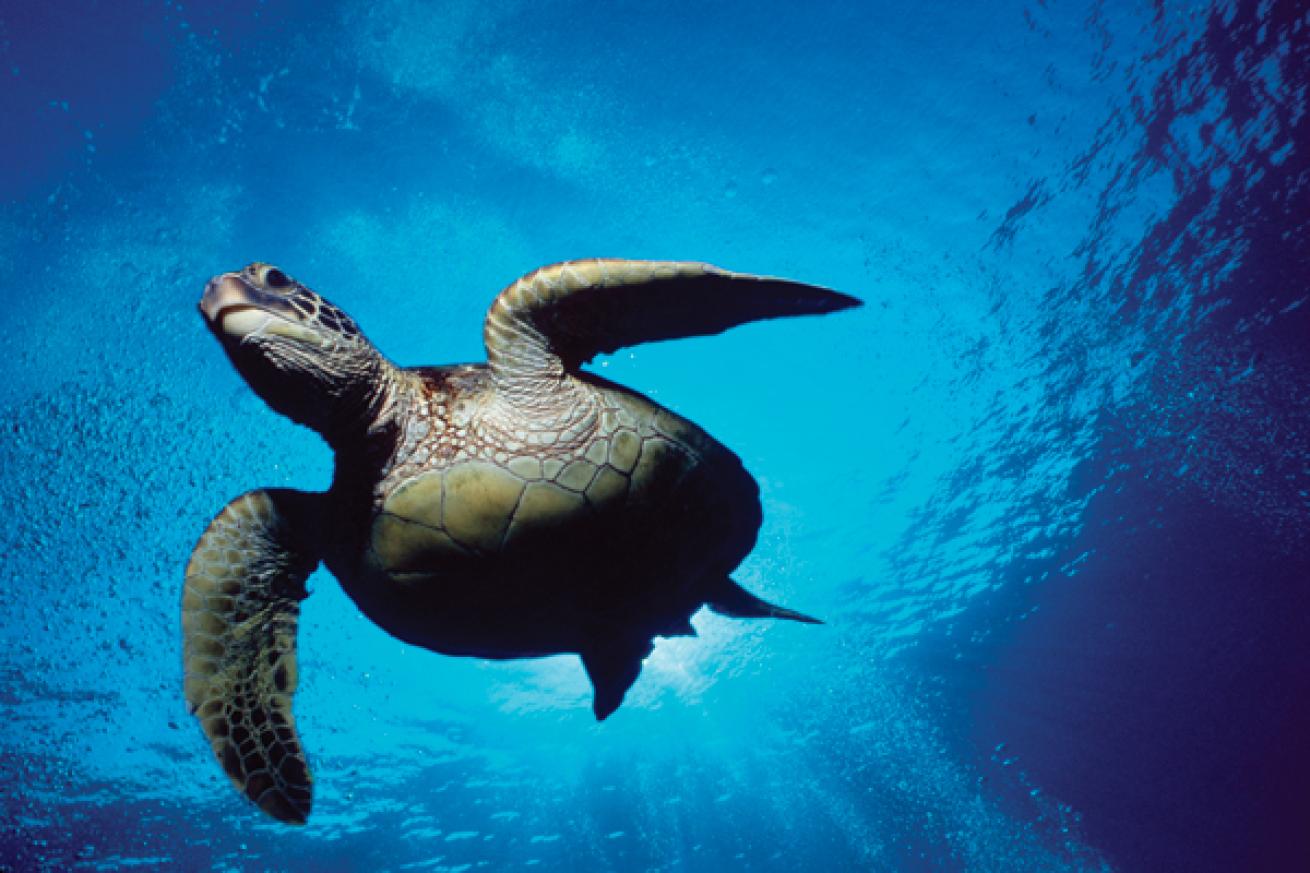
Doug PerrineSafari Diver hosts an intro to tec class.
Bolstering the local tec-diving community is a constant flow of out-of-state enthusiasts who come for training, or as a respite from Northern winters. That said, technical trips are rarely offered daily by any of the area’s charter operators, and instead are scheduled according to demand. For divers traveling solo or in small teams, advance planning is the best way to determine who is going where, and when.
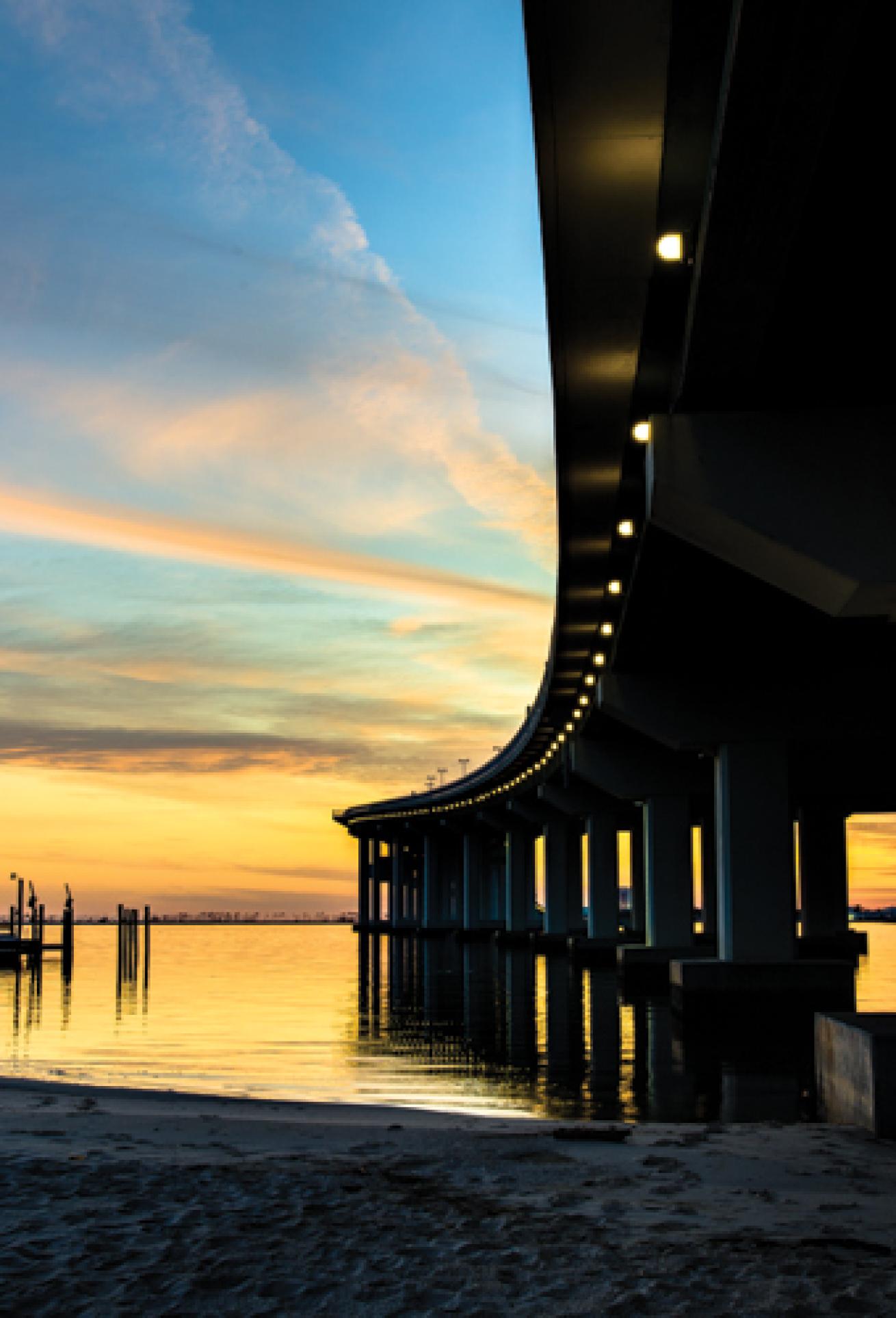
Wayne MacWilliamsDeerfield Beach is conveniently located to a 300-foot dredger.
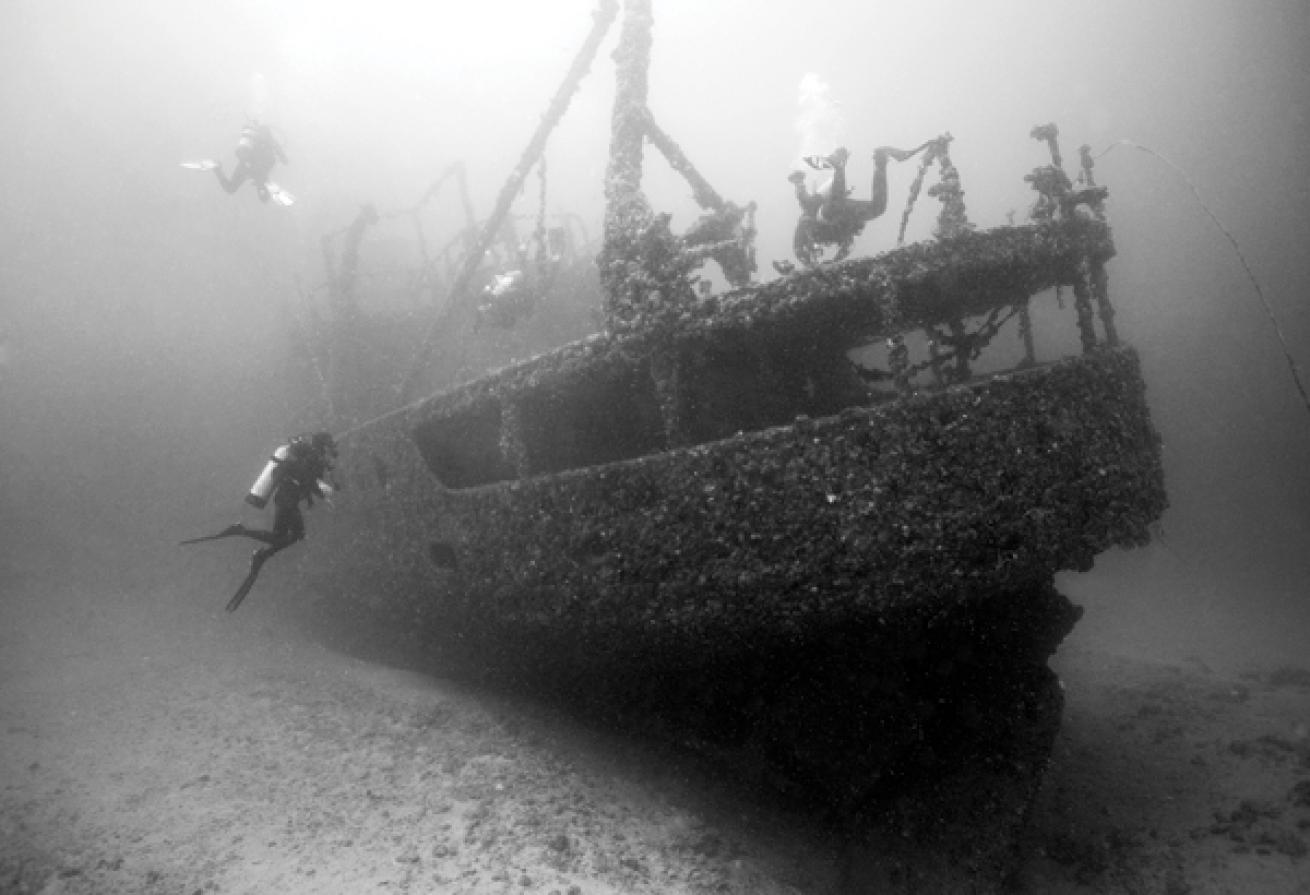
Walt StearnsThe 175-foot Captain Dan, scuttled at 110 feet in 1990, is a magnet for jacks, nurse sharks and other marine life.
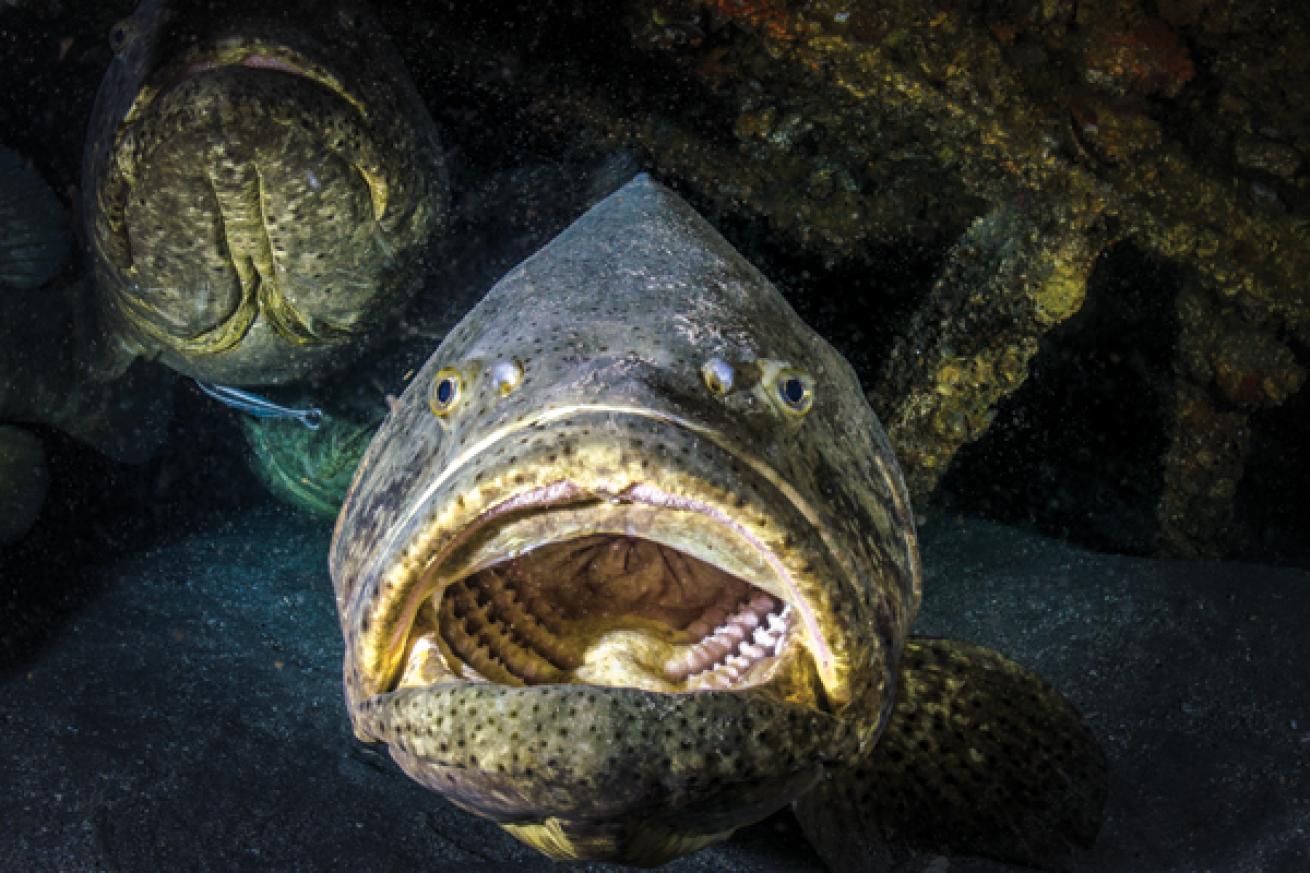
Wayne MacWilliamsGoliath Grouper can be found lurking inside South Florida's deep wrecks.
Offshore conditions in the Fort Lauderdale/Pompano area generally offer better visibility than sites farther to the south off Miami, while currents are typically a bit milder than those washing the coast farther north in Palm Beach and Jupiter. In terms of marine life, divers can encounter schools of patrolling jacks, or the occasional goliath grouper lurking in a cargo hold, but the most dramatic inhabitants are the cloud-like schools of baitfish that envelop superstructures, and the brilliant orange cup corals that encrust the hardware.
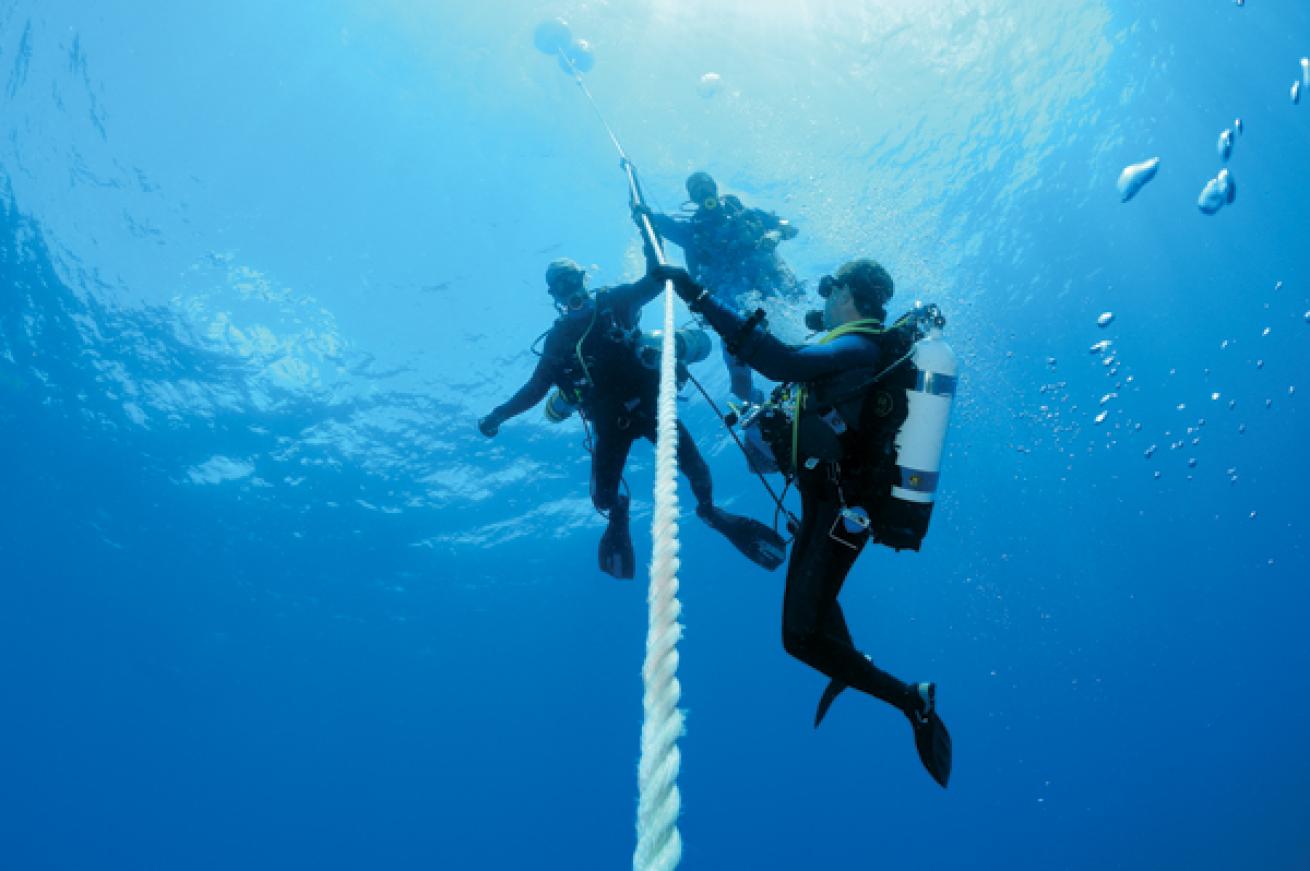
Joseph C. Dovala
Unlike Palm Beach operators — which typically conduct wreck and reef dives as drifts — boats serving Fort Lauderdale and Pompano wreck sites will almost always tie in, providing divers with a secure down line and stationary deco reference. When currents are strong, some captains might offer the option of a live drop if they feel the divers are qualified. In either scenario, divers should carry a substantial surface marker that can be deployed from depth.
In addition to the region’s extended range sites, there are ample opportunities for shallower pursuits. One of the most popular is the Wreck Trek, which ties three wrecks — Jay Scutti, Tracey and Merci Jesus — together on a single exploration in the 60- to 70-foot range. Closer to shore, the Copenhagen rests in just 30 feet of water, and is enjoyed by both divers and snorkelers. There are also a wide variety of reef sites in shallow to midrange depths. One favorite is the shore dive at Datura Avenue beach in Lauderdale by the Sea.
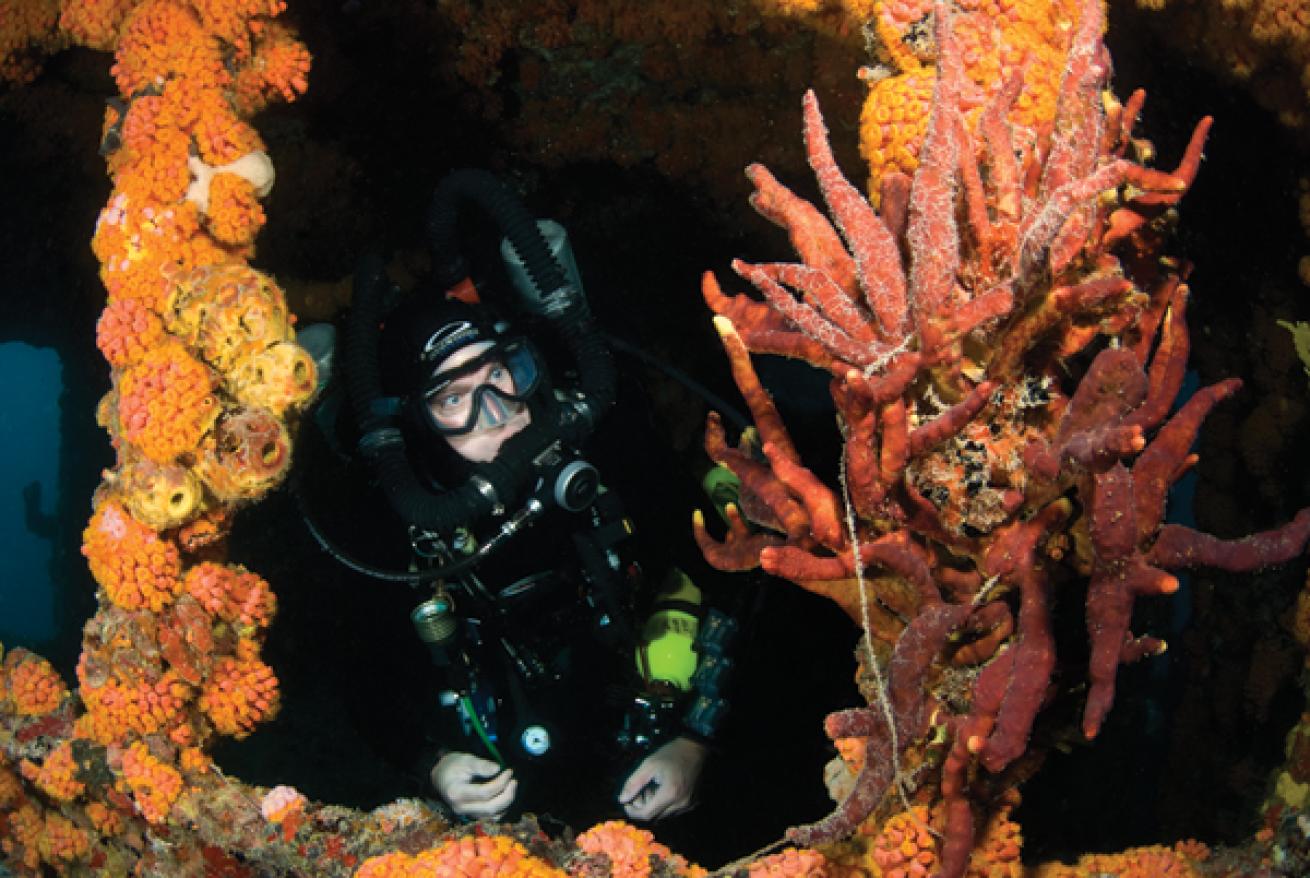
Walt StearnsHydro Atlantic wreck decked out in orange cup corals and finger sponges.
Another plus for divers traveling with non-diving family or friends is the Pompano Beach and Fort Lauderdale areas’ reputation as a vacation destination, with world-class beaches and a wide range of dining and entertainment options. Whether your goal is to dive deeper and longer, or just to mix some serious bottom time into a beach vacation, this stretch of South Florida coastline can accommodate.
South Florida Itinerary
DAY 1
Ask South Florida Diving Headquarters to let you on the boat with an intro to tec class on the Safari Diver. Your doubles fit right in, and with a max depth of 130 feet, the Rodeo 25 provides a skills refresher without a long deco. Later, head down to Lauderdale by the Sea, grab a late lunch at Jojo’s Tacos, and then finish the day with live music at Aruba Beach Café.
**DAY 2 **
Wake up early to hit Pompano Dive Center for a normoxic trimix fill and a tec trip to the Miller Lite. Afterward, stop by Under the Sun for a monster Reuben, then drive down U.S. Highway 1 to Fort Lauderdale for a visit to Brownie’s, ground zero for DIR-style tec diving. End the day swapping dive tales at Southport Raw Bar.
DAY 3
A midday departure with Dixie Divers leaves time for a hearty morning feed at Country Ham and Eggs, then it’s time for the main attraction, the Hydro Atlantic. The Lady Go Diver’s Deerfield Beach location makes for a short run to a 300-foot dredger that sits upright from 120 to 175 feet. After the dive, splurge on dinner at Cap’s Place.
Need to Know
>>When to Go Seas are calmest in summer and early fall. Passing winter cold fronts push up larger swells but rarely suspend dive operations.
>>Dive Conditions Water temps range from the low 80s in summer to the low 70s in winter. Cold-water upwellings can create thermoclines at any time of the year, dropping bottom temperatures into the low 60s. Visibility averages 80 feet, but can drop as low as 30 when onshore rains or current eddies carry hazy water to the reefs. The Gulf Stream’s east-to-west shifts dictate current strength, which can range from zero to 2 knots.
>>Operators Pompano Dive Center (pompanodivecenter.com), Dixie Divers (dixiediver.com) and South Florida Diving Headquarters (http://www.southfloridadiving.com/) offer custom gas blends and regular extended-range charters.
>>Price Tag Two-tank trips to wrecks within recreational range are $60; tec trips run $80 to $85.
>>Topside Gold Coast beaches are a must. Choose the quieter vibe of Lauderdale by the Sea or join the tanned and toned in Fort Lauderdale. The riverfront district at Las Olas is worth a stroll; after ogling megayachts at Pier 66, Shooters Waterfront is the place to savor an umbrella drink. For a respite from the fast lane, Hugh Taylor Birch State Park is a natural oasis in the center of the action.










